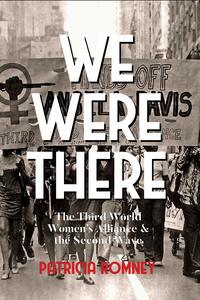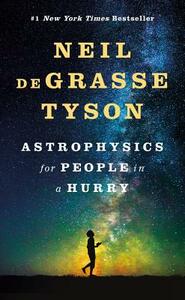Take a photo of a barcode or cover
kevin_shepherd's Reviews (563)
The crew of the spaceship ’Earthling’ is tasked with the design and implementation of an A.I. computer control system. But first, to avert certain disaster, they must figure out how to integrate consciousness and morality into their fledgling prototype, otherwise their 400 year interstellar mission is destined for disaster.
Here, Frank Herbert writes like both a biomechanical engineer and a Freudian philosopher. This is a technologically detailed sci-fi thriller that will either captivate you or frustrate you, depending on your proclivity for minutia. Consequently (and unlike Herbert’s Dune) this is not a book seething with mass appeal. Frank Herbert’s Destination Void is a study in the specifics and, more importantly, the ethics of artificial intelligence. I found it unsettling but unsettling for all the right reasons.
Here, Frank Herbert writes like both a biomechanical engineer and a Freudian philosopher. This is a technologically detailed sci-fi thriller that will either captivate you or frustrate you, depending on your proclivity for minutia. Consequently (and unlike Herbert’s Dune) this is not a book seething with mass appeal. Frank Herbert’s Destination Void is a study in the specifics and, more importantly, the ethics of artificial intelligence. I found it unsettling but unsettling for all the right reasons.
Full disclosure: I first discovered The Witch of Blackbird Pond in or around 1972 through one of those beloved Scholastic book orders. My ten year old self had a penchant for horror and the book's title was somewhat misleading. I fully expected to read of cauldrons and covens and spells. What I got was a fascinating, coming-of-age, historical fiction that has stuck with me for over 45 years.
I don't often revisit novels I've already read. There are far too many unread books on my shelves to be backtracking through charted territory. But this is one of those touchstones for me that first fueled my love of literature. So, back I went. Back to 1687 and the puritanical intolerance of colonial america. TWOBP is more allegorical than I remembered it to be. Where my ten year old self crushed on sixteen year old Katherine "Kit" Tyler, my crusty-old-man self anguished over the perils of living in a religious state where bigotry and intolerance can get an innocent person burned at the stake. Yes, my perspective may have changed over the years, but my love of this book has remained fairly steadfast and true.
I don't often revisit novels I've already read. There are far too many unread books on my shelves to be backtracking through charted territory. But this is one of those touchstones for me that first fueled my love of literature. So, back I went. Back to 1687 and the puritanical intolerance of colonial america. TWOBP is more allegorical than I remembered it to be. Where my ten year old self crushed on sixteen year old Katherine "Kit" Tyler, my crusty-old-man self anguished over the perils of living in a religious state where bigotry and intolerance can get an innocent person burned at the stake. Yes, my perspective may have changed over the years, but my love of this book has remained fairly steadfast and true.
I was born and raised in the Mvskoke nation of Oklahoma. In those days, we always referred to it as the “Creek” nation, a moniker assigned to Mvskokes by white immigrants. While I myself have no native american ancestry, I grew up immersed in pow wow country and surrounded by Mvskoke (and Seminole, and Cherokee, and Choctaw) friends.
In Mvskoke-land, Harjos are everywhere. The surname is about as common as caucasian “Smith.” I say this because seeing the name Harjo associated with the title ‘Poet Laureate’ gives me a bit of nostalgic homeboy pride. It is my distinction by association. It is my prestige by proxy.
I absolutely love Joy Harjo. As a representative of indigenous peoples (and Oklahoma) I love what she brings to the table. She is more than a poet, she is a force of nature. But, and here is where I turn from socialite to troglodyte, I like-NOT-love poetry. I’ll take good prose over great poetry every time. Langston Hughes, Sylvia Plath, Virginia Woolf… I like their poetry, but I LOVE The Ways of White Folks and The Bell Jar and A Room of One’s Own. Respectively and respectfully.
I’m off to read Poet Warrior.
*For more insight into Mvskoke-Land, check out the FX series Reservation Dogs written and directed by Sterlin HARJO.
In Mvskoke-land, Harjos are everywhere. The surname is about as common as caucasian “Smith.” I say this because seeing the name Harjo associated with the title ‘Poet Laureate’ gives me a bit of nostalgic homeboy pride. It is my distinction by association. It is my prestige by proxy.
I absolutely love Joy Harjo. As a representative of indigenous peoples (and Oklahoma) I love what she brings to the table. She is more than a poet, she is a force of nature. But, and here is where I turn from socialite to troglodyte, I like-NOT-love poetry. I’ll take good prose over great poetry every time. Langston Hughes, Sylvia Plath, Virginia Woolf… I like their poetry, but I LOVE The Ways of White Folks and The Bell Jar and A Room of One’s Own. Respectively and respectfully.
I’m off to read Poet Warrior.
*For more insight into Mvskoke-Land, check out the FX series Reservation Dogs written and directed by Sterlin HARJO.
“Since the mathematicians have invaded the theory of relativity, I do not understand it myself anymore.” ~Albert Einstein
Pedro G. Ferreira’s The Perfect Theory is an astrophysics primer for those of us who have only a precarious grasp on general relativity, quantum mechanics, dark matter, and theoretical physics.
Being the curious novice that I am, I appreciate Ferreira’s reminder that there is no single unifying theory that incorporates all things cosmic. Every concept seems to have at least one detractor, foible or bugaboo. Then again, if it wasn’t intellectually challengeable, cosmology wouldn’t be a science—it would be a religion.
Pedro G. Ferreira’s The Perfect Theory is an astrophysics primer for those of us who have only a precarious grasp on general relativity, quantum mechanics, dark matter, and theoretical physics.
Being the curious novice that I am, I appreciate Ferreira’s reminder that there is no single unifying theory that incorporates all things cosmic. Every concept seems to have at least one detractor, foible or bugaboo. Then again, if it wasn’t intellectually challengeable, cosmology wouldn’t be a science—it would be a religion.
Anarchy Evolution resides at the intersection of science, religion and punk rock. It’s Greg Graffin’s philosophy, autobiography and discography; an odd but interesting presentation of his world view.
I wasn’t at all sure I wanted to venture inside the mind of Bad Religion’s front-man and lead singer. Outside of The Clash (I still have a CD of London Calling) and maybe Green Day, I’m not much of a punk rock aficionado. In my mind, this had all the makings of a literary catastrophe. I imagined Sid Vicious or Johnny Rotten hosting an episode of Nova, or maybe Carl Sagan with a pink & green mohawk...
What I found was an intelligent, articulate musician with a PhD in zoology and a penchant for reason. Color me pleasantly surprised.
I wasn’t at all sure I wanted to venture inside the mind of Bad Religion’s front-man and lead singer. Outside of The Clash (I still have a CD of London Calling) and maybe Green Day, I’m not much of a punk rock aficionado. In my mind, this had all the makings of a literary catastrophe. I imagined Sid Vicious or Johnny Rotten hosting an episode of Nova, or maybe Carl Sagan with a pink & green mohawk...
What I found was an intelligent, articulate musician with a PhD in zoology and a penchant for reason. Color me pleasantly surprised.
When I picked up a chronology of the Third World Women’s Alliance (TWWA) I was not expecting it to be primarily about American women. In my mind the term “Third World” denoted places like Afghanistan and Botswana and Somalia. Instead Patricia Romney writes about the exploits and achievements of women from places like Oakland, California and Brooklyn, New York and Amherst, Massachusetts—women of color who were essentially marginalized and/or excluded from the activities of white, second wave feminists.
If you were to read Estelle Freedman’s The History of Feminism and the Future of Women (2002) you’d find very little written specifically about women of color. In fact, you’d probably come away thinking that all the waves of feminist activism were colorblind and inclusive. Not true.
"As long as women are using class or race power to dominate other women, feminist sisterhood cannot be fully realized." ~bell hooks
Through a series of incarnations, the TWWA evolved into a mechanism of intersectional activism. It represented an alliance of women oppressed under the yoke of “triple jeopardy”; those discriminated against by race, gender and class. In the 1970s, in the midst of the second wave and the fight for the ERA, TWWA became the primary voice for women of color.
The author herself was an activist, and thus so much of what she writes is from firsthand experience. This is an enlightening, albeit disheartening, read; disheartening only because so much of what the TWWA tried to accomplish is still undone. Here in the aftermath of the fourth wave, the struggle continues.
If you were to read Estelle Freedman’s The History of Feminism and the Future of Women (2002) you’d find very little written specifically about women of color. In fact, you’d probably come away thinking that all the waves of feminist activism were colorblind and inclusive. Not true.
"As long as women are using class or race power to dominate other women, feminist sisterhood cannot be fully realized." ~bell hooks
Through a series of incarnations, the TWWA evolved into a mechanism of intersectional activism. It represented an alliance of women oppressed under the yoke of “triple jeopardy”; those discriminated against by race, gender and class. In the 1970s, in the midst of the second wave and the fight for the ERA, TWWA became the primary voice for women of color.
The author herself was an activist, and thus so much of what she writes is from firsthand experience. This is an enlightening, albeit disheartening, read; disheartening only because so much of what the TWWA tried to accomplish is still undone. Here in the aftermath of the fourth wave, the struggle continues.
"Anthropology is the most humanistic of the sciences and the most scientific of the humanities." ~Alfred L. Kroeber
A Cultural Anthropology textbook that was, at one time, requisite at both Columbia Basin College and Washington State University. I’m sure it has undergone many updates and revisions since it last occupied space in my book bag, circa 1992.
A Cultural Anthropology textbook that was, at one time, requisite at both Columbia Basin College and Washington State University. I’m sure it has undergone many updates and revisions since it last occupied space in my book bag, circa 1992.
In 1757, a London astronomer named James Ferguson published a book that attempted to convey his passion for the science to the masses. He titled it, ASTRONOMY EXPLAINED UPON SIR ISAAC NEWTON'S PRINCIPLES, AND MADE EASY TO THOSE WHO HAVE NOT STUDIED MATHEMATICS. I haven't read Ferguson's publication, but I would wager that it's not nearly as enjoyable as Neil deGrasse Tyson's endeavor to do the same.
The Silence of Our Friends encapsulates a sympathetic white perspective of the American civil rights movement in Houston, Texas circa 1967. Taken as such, as a bystander's chronicle, it's incredibly well written and drawn. This isn't a definitive accounting of shameful American history, but rather an epilogue written by an eye witness. That is where this novel is successful. Where it falls short is in its attempt to portray a black point of view - at those points the story becomes cliché.
Published in 1963, La Planète des singes is an ingenious take on the evolution of life and, ultimately, man’s self destructive arrogance and cruelty. Pierre Boulle turns Darwin’s theory on its ear by imagining a world where apes rule supreme. Endowing gorillas, chimpanzees and orangutans with human characteristics paints a truthful and decidedly unflattering self portrait of mankind.
*Those of us old enough to remember the 1968 American film adaptation will see many dissimilarities between Pierre Boulle’s novel and Rod Serling’s screenplay. Both work well for their specific medium, though I much prefer Boulle’s ending over Serling’s clichéd but iconic ‘Lady Liberty on the beach.’
*Those of us old enough to remember the 1968 American film adaptation will see many dissimilarities between Pierre Boulle’s novel and Rod Serling’s screenplay. Both work well for their specific medium, though I much prefer Boulle’s ending over Serling’s clichéd but iconic ‘Lady Liberty on the beach.’









